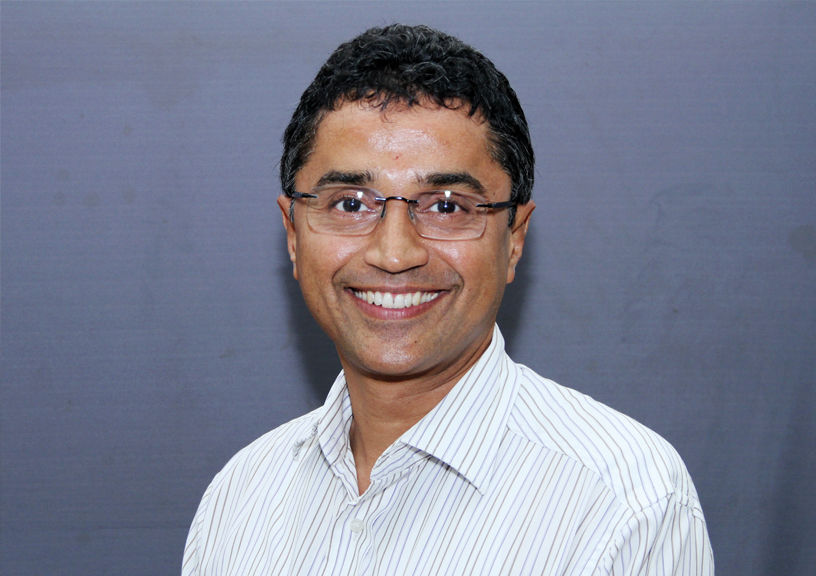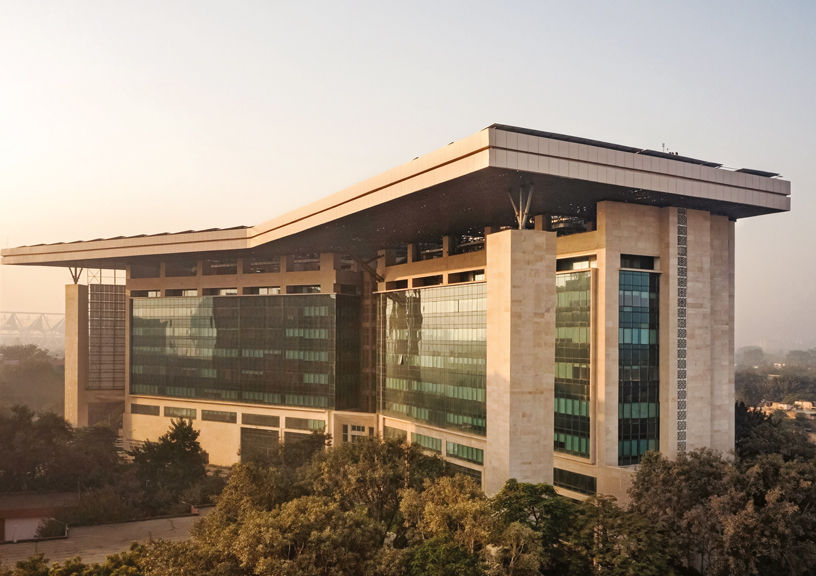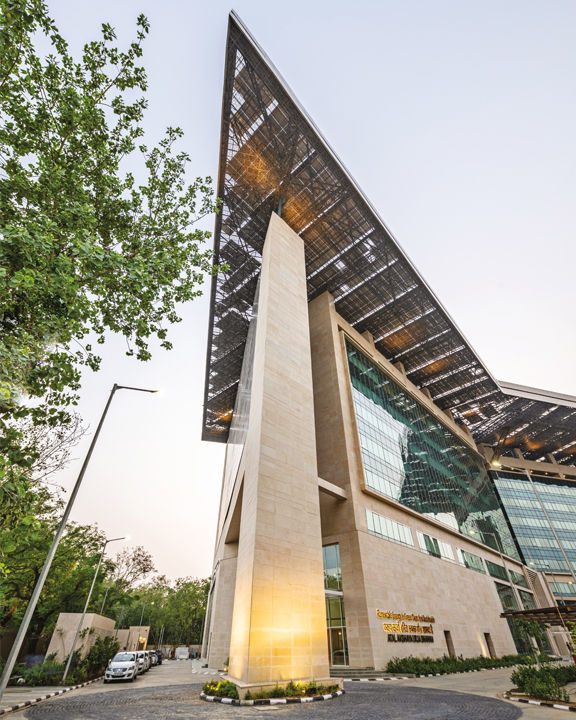India grapples with surging housing and infrastructure needs – all while striving to balance growth with minimal environmental impact from construction. The concept of building ‘less for more’ has gained significant importance in recent times due to the alarming effects of climate change and depleting natural resources. Understanding the causes and effects of urban sprawl and its impact on urban redevelopment requires a multidimensional perspective. In addition, policy options must be discussed to steer urban development towards more sustainable pathways.

Reducing Demand and Repurposing Spaces
In the context of sustainable urban development in India, ‘building less for more’ can prove to be beneficial as it prioritizes compact, efficient, and multi-functional design to optimize space and resource utilization, thereby reducing energy and materials required for construction, minimizing environmental impact, and enhancing the efficiency of transportation and infrastructure. To maintain a progressive outlook on evolving paradigms of enhancing space quality, architects must continuously learn and adapt to new ideas and technologies while repurposing existing structures.
A conscious and compassionate design approach
‘Building less for more’ emphasizes the need for repurposing spaces and reducing the demand for building new structures. This approach aims to promote sustainable urban development by utilizing the available resources efficiently, reducing the carbon footprint, and creating a healthier and more livable environment for the present and future generations.
Urban development is fraught with numerous challenges, such as greenhouse gas emissions, air pollution, road congestion, and a need for more affordable housing. In addition, developing areas near newly planned transit lines results in price hikes in the associated real estate. Urban redevelopment can be a difficult transition for the city’s original inhabitants as it requires adaptation to long-term changes. Therefore, preventing inconvenience and finding sustainable ways to allow organizational planning that does not sever neighborhoods is a crucial aspect of urban redevelopment. Architects, designers, and industry leaders must adopt a forward-looking approach to designing and developing spaces that serve their purpose while minimizing environmental impact.
The Principle of New Urbanism: Smart Growth/ Mixed-use Development
Smart Growth or Mixed-use Development is the fundamental principle that helps mitigate the issue of urban sprawl. Smart growth is an overall approach of development and conservation strategies that help protect our health and natural environment and make our communities more viable and resilient to climate change. Such advanced developments are encouraged to prevent rural areas from becoming more populated due to constant urban expansion. Moving towards sustainable cities provides a new perspective on urban sprawl and its causes and consequences.
The next decade bears the potential to define the growth of Indian infrastructure. However, development confines its own pros and cons. The growth of G.D.P. is accompanied by several positive social impacts,
including improved access to food, education, employment opportunities as well as investments in real estate. On the contrary, we must acknowledge the cons of such policies, resulting in poverty alleviation and disposable incomes causing waste.
Over the course of three decades, we have analyzed our projects at Edifice to understand and be critical/ensure ourselves of the best possible deliverables. For a decade, we have designed optimal spaces, gone overboard in the next decade, and relooked at the aspects: Environment, energy, and water. The analytical data revealed that utilities and spaces were being used at only 60% capacity, which led us to relook at the cost of life cycles of the past
three decades. After careful analysis, the conclusion made us rethink our design approach to design for
need rather than excessive build.

Design strategies to emerge from Urban Sprawl
The development of vertical living spaces must be approached with deliberate inclusivity and sustainable strategies. Regrettably, most real estate developers must be aware of the adverse consequences of poorly designed high-rise buildings. To address this issue, India, the most populous country in the world, could greatly benefit from adopting Ebenezer Howard’s ‘Garden City’ theory, which proposes limiting the size of cities and constructing satellite
towns to prevent urban sprawl. High-rise development leads to a concentration of growth that needs to be more inclusive. To maintain balance and significantly improve the country’s infrastructure development, we must prioritize sustainable, low-rise radial development that is inclusive. Furthermore, such design considerations
must include provisions for the growth opportunities of future generations. Thus, promoting low-rise and radial
development can prove to be a practical solution to reducing carbon emissions in the future.
Challenges faced to make sustainable buildings more widespread in India
In the 70s and 80s, reducing, reusing, and recycling played a significant role in India’s supply and demand chain. Due to short supply, luxury was considered an ornamental addition to design rather than a priority. In current times, it is essential to balance the need for both – growth and demand. In a rapidly growing country such as India, where demand is skyrocketing, easy access to affordable housing development schemes can tackle the need for building more/spatial requirements. The reliance on F.S.I. is causing harm to both the environment and the quality of life.
Ideally, it would be beneficial to construct spaces with similar codes and specifications, with open spaces democratically determined by population density. Such spaces should be consistent across affordable, M.I.G.,
and H.I.G. developments. Any luxurious elements should be limited to finishes and other features. High penalties should be imposed on imported materials to reduce environmental harm, given their contribution to fossil fuel consumption during transportation and the potential for ecological damage.
Relooking how vernacular architecture influences spatial consumption/mixed-use designs in a contemporary context
Incorporating the influences of vernacular architecture and spatial consumption, as well as mixed-use designs, is advantageous in the contemporary context. As a well-known adage dictates, “one can never forget history, lest they be condemned to repeat it.” Hence, vernacular and conventional wisdom serve as valuable resources. By returning to our roots, we can distinctly identify the fundamental principles of architecture that they have developed over time – encompassing light, ventilation, orientation of the built mass, and materiality – all of which remain relevant today.
Mixed-use buildings and communities can accommodate multiple services, and reduce the need for separate structures for each use. This, in turn, can help to conserve resources, reduce the carbon footprint of construction and transportation, and promote more sustainable and livable communities. To limit the carbon footprint, adaptive reuse through repurposing an already-built space is crucial. Additionally, developing multi-purpose spaces during the design stage can ensure 100% utilization and result in building less for more.

1. What are the factors taken into consideration to repurpose a structure?
The primary concern is to reduce the carbon footprint, which means, ideally, avoiding new construction, especially in areas with existing buildings. The preferred approach is adaptive reuse—rethinking and repurposing existing structures. In most cases, this is feasible, as long as the buildings are structurally sound, have natural light and ventilation, and adhere to the latest National Building Code standards for habitable spaces in terms of dimensions, heights, and, if needed, staircases.
2. Explain how satellite towns can prevent urban sprawl.
Decongestion emerges as the prevailing course of action, aligning with my steadfast belief in Ebenezer Howard’s visionary concept of the Garden City from 1898. In this innovative urban design, a municipality was meticulously crafted to accommodate 32,000 inhabitants, and once this population threshold was attained, the blueprint called for the establishment of yet another Garden City. A satellite town, as envisioned by this concept, encapsulates this ethos. Liveability is the need of the hour. Satellite Towns underscore the contemporary imperative for enhanced liveability, epitomizing a paradigm where one’s existence harmoniously intertwines living, working, and leisure activities, all conveniently encompassed within a compact 5-kilometer radius.
3. What are the factors that define an ideal well-designed high-rise building?
A community-centric design approach in residential planning is essential when designing a holistic and well-designed high-rise building. In our mission of building for India by building green, our approach towards strategic master planning in residential spaces requires us to cater to the needs of each individual/user, while also embracing and promoting sustainable living and energy-conscious community living.
For instance, our recently completed residential project– ‘Serein Housing, Thane’ showcases 658 apartments encased within three towers in a 7.5-acre parcel of land – with a mix of 1-, 2- and 3-bedroom residences and duplexes accompanied by amenities such as sports facilities, children’s play area, a swimming pool, a community hall and an open-air theater, distributed equitably among the dwellers.
Another example is our upcoming project located in the heart of Matunga, Mumbai — ‘Godrej Five Gardens,’ which boasts 27,000 sq. ft of open space, comprising 45% of the total area. Urban Greens are linked beyond gated enclaves through radial planning, characterizing a pedestrian zone of 15,000 sq. ft. Incorporating rich landscaping and radial planning elements found in garden cities, the masterplan offers multiple activity nodes for various purposes. Similarly, located in the middle of metropolitan Mumbai, another one of our ongoing projects ‘Godrej Urban Park’ comes with its own ‘Pure-Air Zone’ providing up-to 98.5-99% pure air for the intended area and is an attempt to promote community living enclosed in the natural landscape. The design and construction will be established in phases, consisting of an all-around Residential Complex with various amenities, facilities, shopping plazas, and expansive landscape avenues for Smart Homes. Additionally, interactive spaces are designed to preserve the existing greens to the north edge of the site with rooftop hill views, ensuring 60% open spaces with a dedicated 400 sq.m. dense plantation area, and a 5-meter vertical garden wall.
Also Read: Beyond Mass Production: Sumessh Menon Explores the World of Bespoke Opulence
About Ravi Sarangan, Co-founder & Director, Edifice Consultants
Architect Ravi Sarangan advocates the philosophy of building less for more, emphasis on the importance of vernacular architecture and mixed-use developments Edifice Consultants Pvt. Ltd. is one of India’s premier design consultancies and impactful practices headquartered in Mumbai. Founded in 1989 by Ravi Sarangan and Sanjay Srinivasan, Edifice holds over 34 years of experience and has done more than 1200 projects.
